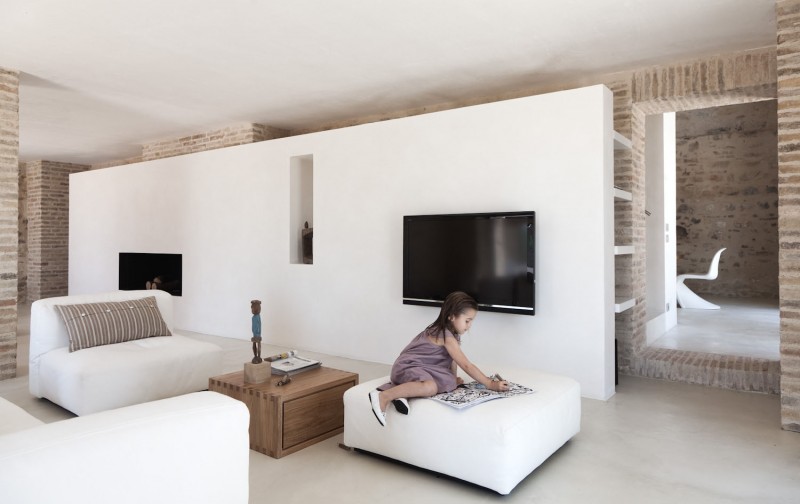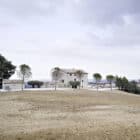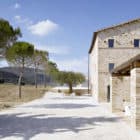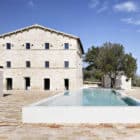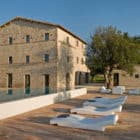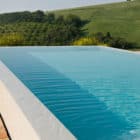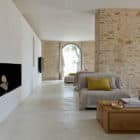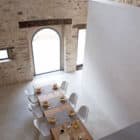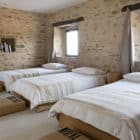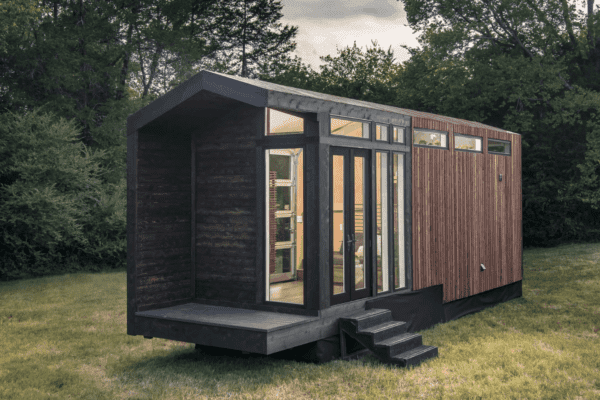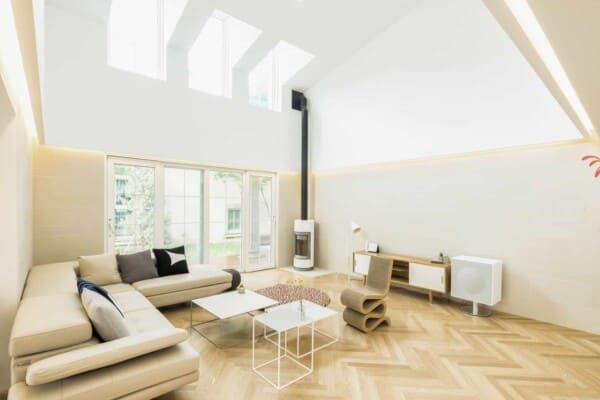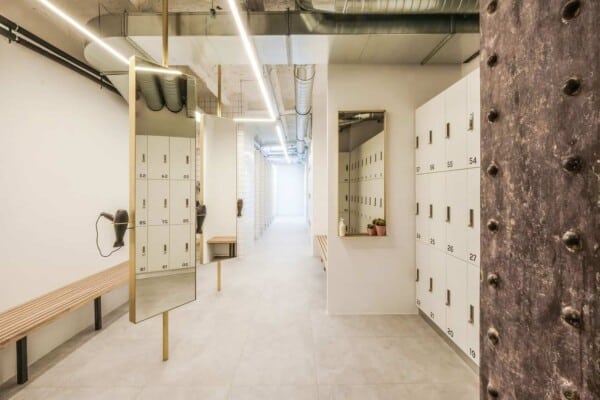Caviano-based studio Wespi de Meuron Architekten has restored Casa Olivi, as 300 years old farm house located in Treia, a town in the province of Macerata in the central Marche, Italy.
Completed in 2010 after almost four years of renovation, this beautiful 3,350 square foot farmhouse now offers 11 sleeps in five ensuite bedrooms.
Casa Olivi can be booked all year round from 4,200€ to 8,400€ per week, depending on the season.
House Renovation In Treia by Wespi de Meuron Architekten:
“The rural property lies in a hilly landscape about 12 km from the town of Treia. The ca. 300 years old farmhouse has three storeys, and half of the main building was damaged by fire in 1995. The outer facade of the main building is put under protection by the municipal authority. The complex was completed by two smaller volumes of one level only: the first was a herd and a furnace, the other one was a cantilever roof barn.
Intention of the project was the renovation and transformation of the property into a contemporary dwelling and holiday house, with attached guest house and pool. The masonry has been largely preserved and restored, whereas all the wood structure (intermediate floors and roof) where replaced. As part of the renewal of the static structure, the necessary reinforcing precautions for seismic safety, were integrated in an invisible manner.
The architectural language thematizes the combination of old substance and new interventions: sometimes by contrast and sometimes by merging both old and new. For example, the roof was restored in the traditional way (primary and secondary wooden beams, subview with terracotta, roof covering with „coppi“ tiles), while the new intermediate floors and new interior walls are in white plaster. The floors also are made without joints in a hard and clear material.
These new white interior surfaces help the reflection of light, giving them the feeling of largeness. In this way it was possible to maintain the relatively small historical apertures in the same dimensions and proportion, whilst all rooms are irradiated by a fresh light.
The original stone wall which divides clearly into two parts the plan of the main building has been respected and largely preserved by the intervention.The northern portion of the house was a ruin after the fire, this ruin has inspired the project. In fact an open ad airy room that goes from the ground floor to roof has been realized.”
Photos by: Hannes Henz
Note: this article was updated with 23 additional photos on April 15, 2013. It was originally published on March 12, 2012.








